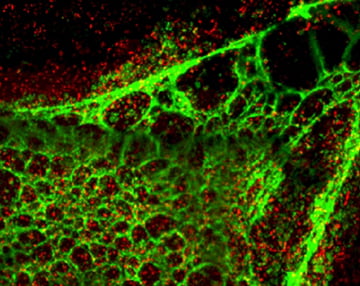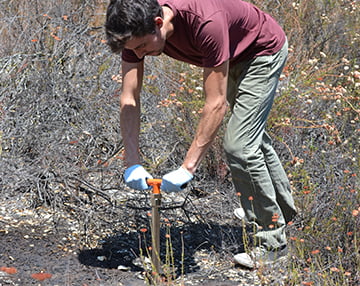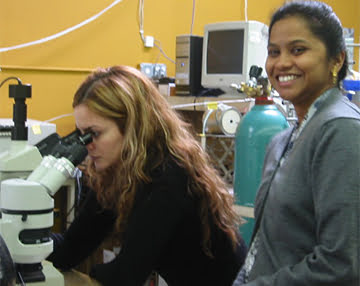


Environmental microbiology research at Oak Crest can be subdivided broadly into three main areas.
The microbial ecology of communities in extreme, specialized niches is being investigated using a combination of cultivation, imaging, and multi-omics, predominantly metagenomics and metabolomics.
The ability of microorganisms to colonize extreme environments is of interest to astrobiologists as possible model systems for life on other planets and is of relevance to bioremediation of polluted sites on Earth. Microbial ecology research on soil and stream asphalt pools is ongoing in an attempt to better understand community composition and how these microorganisms interact and grow in these hostile habitats.
Using metagenomics and deep sequencing, we recently discovered that the latex of Euphorbia spp. (spruces) harbors complex fungal and bacterial communities. The temporal dynamics of these communities are being investigated as well as the complex interactions between suspected pathogens and symbiotic microorganisms con-inhabiting this extreme environment.
Biocatalysis involves an integrated approach, where environmental samples are screened for bacteria capable of high solvent tolerance and the ability to stereoselectively oxidize prochiral organic compounds into enantiopure products of value to synthetic organic chemists. A library of organisms is being developed to afford broad substrate compatibility. These efforts are complemented by culture independent gene prospecting studies.
The factors that underlie the tolerance to normally toxic organic compounds and the resulting chemical transformations are being studied using molecular and chemical techniques. Bacterial biofilms form on most surface types and represent the prevalent mode of microbial life in natural, industrial, and hospital environments. Microbial cells in a biofilm are physiologically distinct from their planktonic counterparts and it has been postulated that these sessile communities possess traits that closely resemble those encountered in multicellular development. The mechanisms that underpin biofilm formation and development are being studied both in the laboratory using environmental isolates, as well as directly in natural systems.
